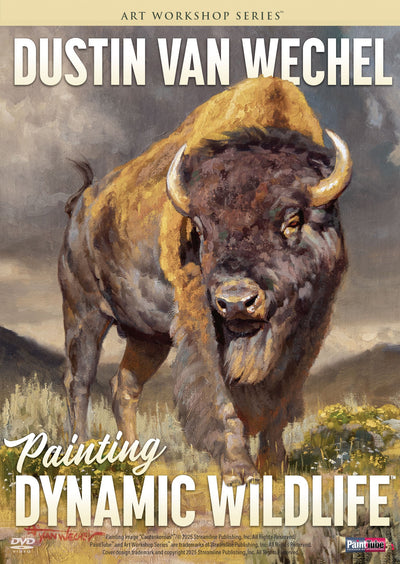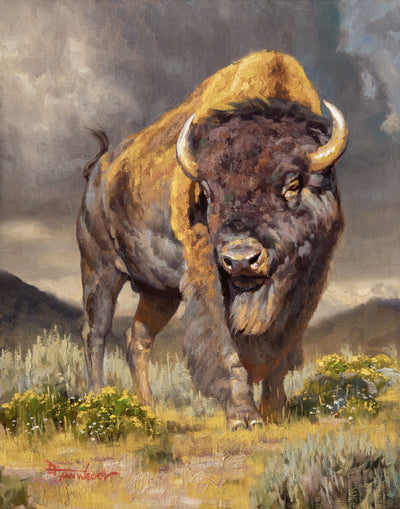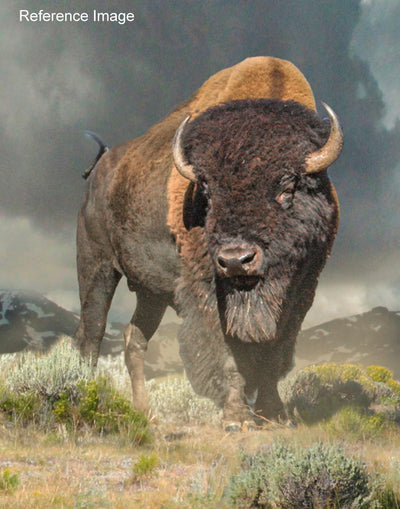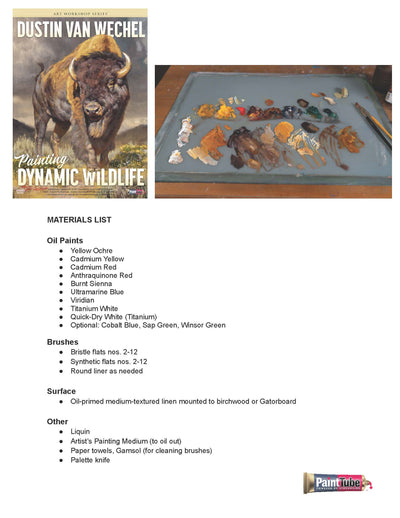Unlock the “Design Triad” Formula for Wildlife Paintings That Command Attention
Are you caught up in the endless struggle to capture every last detail — hoping your wildlife paintings will finally come alive with bold and dynamic energy?
What if you could create dynamic, eye-catching animal art without obsessing over every tiny feature?
Internationally acclaimed wildlife artist Dustin Van Wechel has cracked the code — and it has nothing to do with tedious detail work.
Instead, Dustin’s secret lies in the bold foundations of design and composition — the very elements that make his art leap off the canvas and earn a place in top museums like the National Museum of Wildlife Art and the Autry Museum of the American West.
The best part?
You don’t need to spend years figuring it out through trial and error.
In Dustin’s new course, Painting Dynamic Wildlife, he reveals his systematic process that makes creating compelling wildlife paintings feel less intimidating and more intuitive, revealing how to:
● Build captivating paintings from the very first stroke
● Use composition, brushwork, and texture to create the illusion of lifelike detail
● Avoid the number one mistake that keeps most wildlife art looking flat and lifeless
If you want to create animal paintings that grab the eye and stir emotion — without getting lost in the weeds of unnecessary detail— this course is your shortcut to the next level.
Meet Your New Instructor, Dustin Van Wechel!
For more than 20 years, Dustin Van Wechel has established himself as a master wildlife painter whose work captures both the power and the subtle beauty of animals in their natural environments.
His distinctive style — a blend of painterly realism with dynamic compositions, controlled light and shadow, and compelling textures — has earned him recognition in the most prestigious circles of wildlife art.
Dustin’s work has been exhibited throughout the United States in one-man shows, major art exhibitions, and museums including:
● The National Museum of Wildlife Art
● The Autry Museum of the American West
● The Buffalo Bill Historical Center
● The Briscoe Western Art Museum
● The Booth Museum
● The National Cowboy and Western Heritage Museum
What sets Dustin apart from other wildlife artists is his unique background in commercial art and graphic design.
This foundation gave him a deep understanding of composition and design — elements he’s masterfully translated into his wildlife paintings to create powerful paintings that command attention.
Now, Dustin is sharing his systematic approach to wildlife painting, giving you the opportunity to learn from an artist whose work has earned places in some of the nation’s most respected museums.
What You’ll Discover Inside:
● The “Design Triad Approach” that creates compelling compositions every time — select dominant, subordinate, and accent principles for maximum visual impact…
● The 10 design principles and how to use them to communicate your subject’s story effectively (size, shape, color, texture, gravity, attitude, interval, position, direction, and movement)...
● Dustin’s key insight that makes every little part of your painting interesting (so interesting that cutting a piece would result in an abstract painting in itself!)…
● The two critical decisions you must make immediately to set yourself on the path to successful wildlife paintings — and why making these decisions early prevents major errors later…
● How to create more interesting brushwork by using a brush that feels “slightly uncomfortable” — this counterintuitive approach is one of the KEYS to producing expressive brushwork…
● The “Painting Is King” philosophy — learn when to prioritize what works for your painting over the technical accuracy of your animal subject…
● How to avoid the common trap of over-rendering that makes animals look stiff and less lifelike…
● Why “nature can be very gray, even when it’s vibrant” — and how to mix beautiful grays that create depth in your wildlife scenes…
● The secret to creating form through brushwork — how to make your brushstrokes follow the form of your subject for more three-dimensional results…
● Dustin’s guide to WHERE edges are KEY in your wildlife painting — discover the four specific opportunities that create visual interest…
● How to create the illusion of detail through texture — why you don’t have to paint every hair on your animal subjects…
● The patchwork/tile application technique that creates more depth when painting animal fur…
● Color temperature secrets that bring wildlife subjects to life — learn how to avoid chalky mixes and create rich color…
● How to inject color into areas where your reference photo shows none — the key to livening up your paintings naturally…
● A simpler approach to painting landscape elements without tedious detail work…
● How to create automatic interest and variation by using different tools within the same area…
● Dustin’s techniques for texture building with the palette knife, giving a sense of depth and detail without much effort…
● How to “open up shadows” so they don’t become black holes in your painting — adding life to the darkest areas…
● The key to making light look luminous on your wildlife subjects — using different temperatures of colors in the same value range…
● How working back to front, dark to light, and simple to complex creates a logical progression for your painting’s development…
● What to do when you get BORED while painting — Dustin’s strategies for staying engaged that actually improve your color and value relationships…
● PLUS: How to keep your process and materials simple while utilizing several painting techniques (scumbling, impasto, glazing, and more!) for maximum visual impact…
Chapter Breakdown
Introduction
10 Principles for Compelling Paintings
Tools & Materials
Block-In
Develop the Background
Develop the Bison
Develop the Foreground
Refine the Painting
Extra Bonuses:
● High Speed View for your painting convenience
● Exhibit of Dustin Van Wechel’s works for your creative inspiration
● Sitdown with Dustin Van Wechel for insights and motivation
